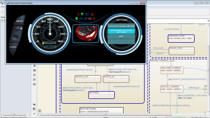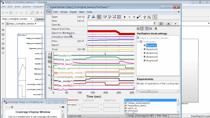Design and Simulating Autonomy for Construction Vehicles
Overview
Similar to commercial carmakers, makers of construction, mining, heavy-duty and off-road vehicles are actively adding autonomy or AI co-pilots to their vehicles. Engineers working on those off-road applications often need to address challenges specific to off-road operating conditions that are very different from those in self-driving cars. Those challenges include the impact of off-road motion on perception sensors, and the necessity of combining forward and backward motions to go to certain restricted places. In this webinar, we will use an autonomous construction vehicle as an example to show how to use MATLAB and Simulink to develop and customize autonomy for off-road vehicles. We will show testing and optimization of the autonomous algorithms through a co-simulation between Simulink and popular game engines.
Highlights
In this webinar, we will use an autonomous construction vehicle simulation example to show how to
- Create a map of the environment and determine the location of the vehicle even given noisy sensor readings
- Use algorithms to plan a vehicle’s path given the vehicle’s dynamic constraints and operator’s preferences
- Develop real-time motion control for obstacle avoidance and safe operation
- Establish co-simulation between Simulink and virtual environments built in game engines, such as Unity, using ROS for communication
- Customize the algorithms to address common constraints in different off-road scenarios
About the Presenters
Michelle Valente joined MathWorks in 2021 as an application engineer. She specializes in Computer vision, AI and Autonomous Systems. Prior to joining MathWorks, she worked as a research engineer developing perception algorithms for robotics applications. She holds a Ph.D. in Robotics from MINES Paristech.
Christoph Kammer is an application engineer at MathWorks in Switzerland. He supports customers in the robotics and autonomous systems domain in the areas of control and optimization, virtual scenario simulation and digital twin as well as machine and deep learning. Christoph has a master’s degree in Mechanical Engineering from ETH Zürich and a Ph.D. in Electrical Engineering from EPFL, where he specialized in control design and the control and modelling of electromechanical systems and power systems.
Julia Antoniou is a senior application engineer for the aerospace and defense industry at MathWorks. She specializes in modeling and simulation of physical systems, with a focus on robotic and autonomous systems. Prior to joining MathWorks in 2017, Julia worked at companies such as iRobot and Johnson & Johnson in their mechanical engineering, systems engineering, and manufacturing engineering departments. Julia holds B.S. and M.S. degrees in mechanical engineering from Northeastern University.
You Wu is a robotics evangelist and the Principal Robotics Industry Manager at MathWorks, promoting best practices in robot development processes to industrial customers. Dr. Wu received his M.S. and Ph.D. degrees in robotics from MIT and a Bachelor’s degree from Purdue University. Before joining MathWorks in 2020, he was CTO of Watchtower Robotics, a startup that deployed inspection robots into municipal water pipe networks.
Recorded: 15 Mar 2023




